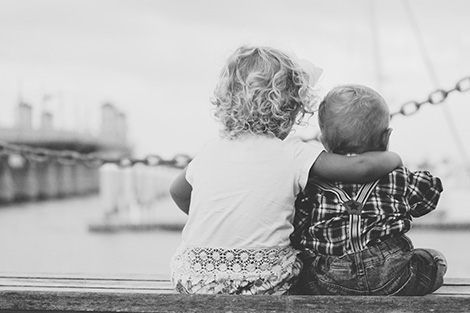Blog
Find out your Attachment Style and what it means
Posted by Amy Rosechandler

I promise this isn’t your average therapist spiel. You know, the one about how all your issues relate back to your mother. That’s too simple. Nor will I insist you’re forever doomed to repeat unhealthy behaviors you learned in your family. That’s fatalistic. Again, not my style.
I do want to explore how early-learned communication styles have an impact on our relationships. Our effectiveness in getting what we need from people can be influenced by what we learn to expect.
So, what are attachment styles you ask? Patterns of attachment were researched quite lot in the 60’s and 70's by a team of psychologists- Ainesworth and Bowlby. They realized even our very early relationships (like, as babies!) are based on trust. They came up with different categories to describe how people trust and bond with others in the world. We form our attachment styles based on early interactions with people we are close to. Not everyone fits neatly into these categories, and this is the very short version, but, here they are:
Secure: People who have secure attachment style are able to trust that others can meet their needs. They feel confident and comfortable with relying on others. They also trust themselves to meet their own needs. If something bad happens, someone with secure attachment style might call a friend, talk, and then take themselves out for ice-cream.
Ambivalent/Preoccupied: People with ambivalent attachment style aren’t quite sure if they want to trust others to meet their needs. They aren’t sure what to expect and may need a lot of reassurance that trust is possible. When something bad happens, a person with ambivalent attachment style might text a friend to come over that minute, then express anger when the friend isn’t able to drop everything.
Avoidant/Dismissive: People with avoidant attachment style don’t feel very good trusting others to meet their needs. They like to be independent and take care of things themselves. When something bad happens, a person with avoidant attachment style might see a friend calling, ignore the call, then turn off their phone. They might tend to dismiss their own feelings or bottle them up.
Disorganized: People with disorganized attachment style may have trouble opening up or seeking help, and may have trouble responding to their own emotions in healthy ways. People with disorganized attachment style may have been through trauma while growing up. This trauma may have caused the person to feel fear and confusion about who to trust, making it hard to get what is needed in a relationship. This fear and confusion might lead a person to mistrust others. When something bad happens, a person with disorganized attachment might leave the house, go to a bar and get into a fight.
These examples are not meant to diagnose or label anyone in particular. It’s not always easy to understand your own patterns. About 60 percent of people have a secure attachment style. And no matter what attachment style you have, all people crave belonging and connection. Once we have more awareness of our attachment patterns, we can better understand our own needs in relationships. Let’s say you’re someone with a secure style. You might be more likely to trust people to be there for you, and you might be pretty comfortable relying on others for support. If you are seeking a romantic relationship, you might feel more satisfied in a relationship with someone who trusts people, too. That way, both of you can share your feelings and needs, and help each other. But let’s say you have a friend with an avoidant style. This friend is very independent. She doesn’t go to many people with her problems. She would much rather try to solve things on her own first and doesn’t really trust that others will help. If this friend starts dating someone who loves to help, wants to be very close and share feelings, it could bring about tension in the relationship. Attachment styles are all about trust in the bonds we make. We connect best with people who we trust will take care of us the way we want to be cared for.
By understanding our attachment style, we can know more about what we need and want in relationships. This is something I discuss frequently with my clients. Although attachment patterns are learned early, they are not fixed forever. We can learn to adapt, and even change our attachment and communication patterns.
To learn more about your attachment style, try taking this free online questionnaire. It can be very helpful to discuss the questionnaire with a counselor, who can help you find meaning and even set goals based on your answers.
Contact me about setting up a consultation to assess your attachment style! During the assessment we will:
- • Identify your styles of attachment and the meaning behind this
- • Discuss current relationships in your life
- • Look at how your attachment style affects communication in key relationships in your life